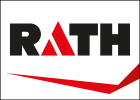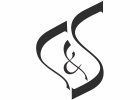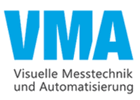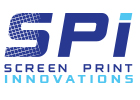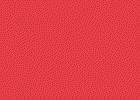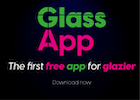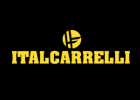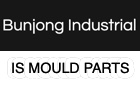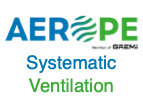In this technical article, Ian Crosby, sales and marketing director at Zytronic explains how glass can be transformed from a simple sheet to a sophisticated touch sensor through the application of specialist processing and machining techniques at its UK manufacturing facility.
To create the best touchscreen solution for challenging environments, it will come as no surprise that different types of glass are used. Standard soda-lime glass contains a small amount of iron, which gives it a greenish hue – this is noticeable when looking at the edge of a piece of glass or through a very thick sheet. Low iron glass (also sometimes called ‘water white’ glass) is made using carefully selected raw materials to minimise the amount of iron and reduce this tinting effect, making it ideal for applications where the true replication of the displayed image colours beneath the touchscreen is critical.
At Zytronic, full sheets of glass, in the required thickness, are cut to any shape or size, up to around 90 inches (2.28 m) on the diagonal. As the touch sensors are all produced in-house, using a uniquely flexible manufacturing process, custom designs are possible with no to low tooling fees, and in any quantity from a single prototype to many 1000’s of units.
Once the glass is cut to shape CNC machines can cut holes and slots into the screens so that peripheral devices such as credit card readers, ticket printers and NFC detectors can be mounted behind the finished touch sensor when installed in a kiosk. Other surface features, such as dimples and grooves or raised markings may now also be added to the glass, to further customise the screen and help guide the user’s fingertips when not looking at the touch sensor. The on-site CNC machines are also used to grind, profile or polish the glass edges for aesthetics or safety. For more sophisticated designs, Zytronic has dedicated ovens which bend the glass to specific radii, matching the latest curved displays to create an immersive, ‘wraparound’ experience for the touchscreen user.
Once the glass has been machined, features such as graphics and logos may be added. Ceramic inks are highly scratch resistant and recommended for rugged applications, while polymer-based inks offer a broader range of colours. In applications where the most accurate colour replication is critical, it is usually recommended that the touch sensors are made from low iron glass.
We also use many types of special glass coatings to enhance the touch sensor’s functionality in certain environments. For example, for ‘smart’ interactive mirror applications, glass coated in a highly reflective, but semi-transparent metal oxide layer is used to produce the touchscreen. This enables the interactive display to act as a mirror when not powered, but to be visible when switched on. Different levels of mirrored coatings are available depending on the amount of reflectivity required together with the viewability of the underlying display.
In strongly lit indoor and outdoor applications, reflections from the touchscreen surface can impair the readability of the underlying image, unless a high brightness display is used. Anti-reflective coated glass helps to reduce light reflected from the surface by around 75%, making it suitable for brightly lit locations while maximising image clarity and crispness. In direct sunlight, glare can impede users from interacting with a touchscreen. By manufacturing the touch sensor from chemically etched anti-glare glass, the sub-microscopically roughened surface scatters the reflected light and provides a durable, cost-effective method of enabling a user to view information on the display in outdoor applications. The slightly matt surface of anti-glare glass has the added benefit of improving how fingers ‘glide’ over the touchscreen – sometimes referred to low ‘stiction’, enhancing user experience on applications where lots of dynamic, moving touchscreen interaction is required.
In addition to its transparency, glass is a far stronger material than you may imagine. Zytronic takes full advantage of this property and can manufacture and laminate touch sensors in thicknesses up to around 30mm. As a result, touchscreens can be produced which can pass practically any impact test, including industry standards such as UL60950, IK10, UL22 and others. Zytronic regularly designs touch sensors for extreme applications such as the control panels used in mines, oil rigs and petrochemical facilities, which must conform to ATEX, IECEx and other standards governing the use of electrical equipment in explosive atmospheres.
More commonly, glass with a thickness of 3mm or more is strengthened by thermal toughening. This involves heating the glass to just above its strain point (between 500 – 600 degrees C in soda-lime glass) and then rapidly cooling it back to ambient within a few seconds using regulated compressed air. This in-house process creates alternate opposing forces in the glass, the surface in compression and the interior, under tension. The resulting toughened glass, often referred to as being vandal resistant, is around five times stronger than annealed glass and has the added benefit that, if broken the tension within the glass causes it to break into relatively safe, small cube-like pieces. Zytronic thermally toughens and tests all its glass in accordance with BSI/ISO 12150.
For glass less than 3mm thick, or for applications requiring even greater levels of impact resistance, Zytronic can produce touch sensors using chemically strengthened glass. Here, the cut glass panels are placed in a bath containing molten salt (NaCl) for several hours. During this time, smaller potassium ions in the glass surface are replaced by larger sodium ions from the liquid salt. The longer the glass is left in the bath, the deeper into the glass the ion exchange occurs (also called “depth of layer” or DoL). As in thermal toughening, this process creates compressive forces in the surface of the glass, which make it up to around eight times stronger than annealed glass, however if shattered, chemically strengthened glass tends to break into large pieces like untreated glass, so system designers need to keep this failure mode in mind when designing touch systems for public use.
Whatever method of strengthening is used, once processed, the glass screens are thoroughly cleaned with de-ionised water, air dried and are then moved into one of Zytronic’s ISO class 5 clean rooms for careful inspection before beginning the final steps in their journey to becoming fully functioning projected capacitive touch sensors. During this phase of manufacture, copper touch detection electrodes are applied directly to an optically clear adhesive film, laminated to the rear of the glass. With a diameter of just 10 microns these electrodes are barely visible to the human eye. In contrast with other types of capacitive, acoustic and optical touch sensors, the active touch detecting components (in this case, copper electrodes) are embedded behind the front glass substrate. Placing them here instead of on or around the surface which will be touched ensures protection from any scratches and impacts, creating stability, reliability and consequently ensuring a long product life.
Once the matrix of copper electrodes have been encapsulated by another laminated film applied to the rear – this time a hard-coated, optically clear polyester film – thin, flexible connectors are fixed to the terminating copper electrodes at the glass panels edge, enabling the touch sensor to be linked to the touch control electronics – one of Zytronic’s proprietary touch controllers, the exact type determined by whether the application requires the touch sensor to be single- dual or multi-touch.
Zytronic’s projected capacitive touch (PCT™) technology based on the principle of self-capacitance can work with fingers, conductive styli and even gloved hands through glass thicknesses of over 20mm, and is able to reject the effects of raindrops, leaves, dirt and ice, making it ideal for outdoor applications. The newer, multi-touch projected capacitive technology (MPCT™), which uses the mutual capacitance method, is suited to collaborative, multi-user environments as it can detect up to 100 simultaneous touch events through glass thickness of around 10mm.
Zytronic’s proprietary touch controllers are suitable for use with operating systems and software supporting complex touches such as pinches, zooms and swipes, delivering functionality and a user experience that is smartphone-like, but on a far larger and significantly more durable scale. All Zytronic controllers are designed for compliance with the Human Interface Device (HID) protocol, allowing USB plug-and-play operation with all current MS Windows operating systems and suitable versions of Linux and Android. In addition, a range of other interface protocols are available including, serial, SPI and I2C, giving touchscreen system designers the flexibility to choose the most appropriate for a given application.
The completed touch sensor is finally and rigorously inspected for function and appearance to ensure the highest levels of quality before being carefully bagged and packed ready for shipment anywhere in the world. As all of Zytronic’s projected capacitive technology (PCT™ and MPCT™) touchscreens are made entirely at its ISO9001:2015 accredited UK facility, the company is able confidently take full ownership of the products performance and provide consistent and repeatable quality. All Zytronic’s touch sensors are bar coded and scanned throughout their manufacture, from incoming raw materials to final product dispatch, ensuring traceability.
The manufacturing set-up is highly flexible allowing Zytronic to offer the highest levels of support to its customers. For example, there is an entire cleanroom dedicated to rapid prototyping. Here, skilled technicians can fabricate samples and prototype touch sensor designs within a few days or weeks, supporting customers increasingly rapid product development timescales.
Over 40 years, Zytronic has invested heavily in developing these processes and technologies allowing them to turn sheets of glass into highly sophisticated and reliable projected capacitive touch sensors designed for the most demanding commercial, self-service and industrial applications. The design options available are almost limitless and the inherent flexibility of the technology means that often there is little or no investment in special tooling to produce a one-off design. This benefit is passed along to the customer through low tooling fees (in many cases, no tooling fee) and no minimum order quantity, making the design of new touchscreen-enabled systems quicker and easier to develop than ever before.



